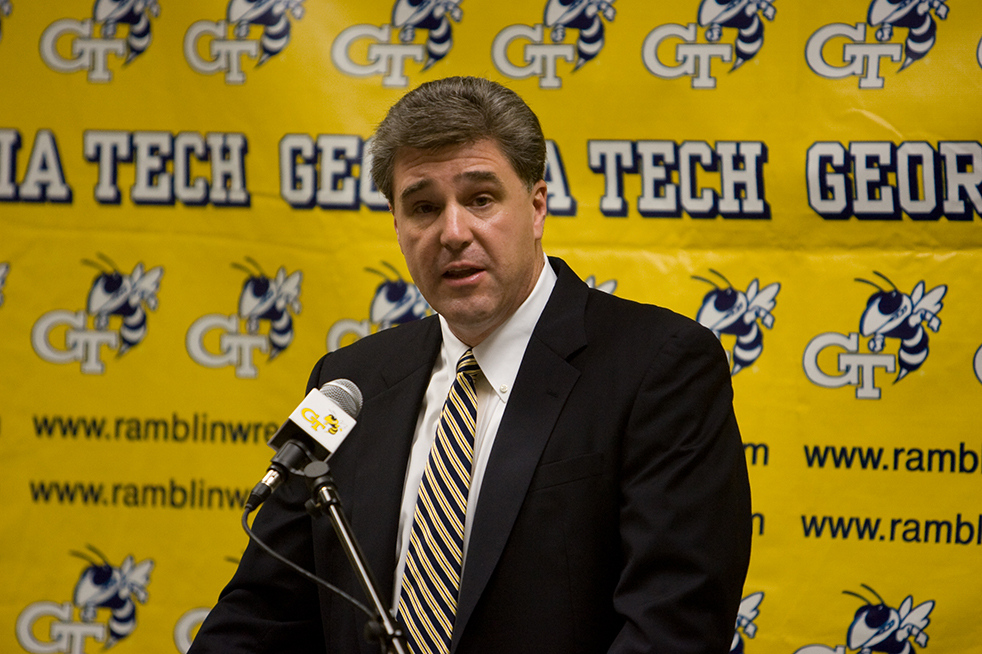Welcome to yet another opinion piece on the college football postseason; by now they are about as guaranteed in life as taxes and death.
But, this may be different than most other opinions you have read because I am actually in support of the current system. The College Football Playoff (CFP), new for the 2014 season, pits the top four ranked teams against each other in a playoff bracket.
This season marks the first time in history that the national champion will be determined by an actual playoff, versus just a single championship game or postseason vote. While it is not a perfect system, it is still better than any other solution ever implemented at the FBS level.
The CFP publishes its own rankings every week starting roughly halfway through the season. The rankings are determined by a thirteen-member selection committee, whose members will normally serve three-year terms that expire at different times to keep a consistent flow of voters.
Five of the committee members are current athletic directors from each of the power five conferences (ACC, Big 10, Big 12, Pac-12, and SEC), while most others have former ties to specific football programs. The members meet weekly and vote via multiple secret ballots after much deliberation.
Every week the teams are evaluated independent of what their previous rankings were, so the rankings will be much more volatile compared to the traditional polls. At the end of the season, the top four teams are placed in the two playoff bowls, while up to six more at-large teams are selected by the committee for placement in the remaining four major bowls.
The CFP replaces the oft-maligned Bowl Championship Series (BCS), which for the last nine seasons used a combination of the Coaches’ Poll, Harris Poll and computer rankings to determine its own top 25. At the end of the season, the top two BCS teams would face each other in the BCS National Championship Game, while a combination of conference champions and at-large teams competed in the other four BCS bowls. From its inception in 1998 to 2004, more emphasis was placed on computer rankings, and the final postseason structure featured one less bowl.
The two biggest issues with the BCS were that it only allowed the top two teams to compete for the title, and that it allowed computer algorithms to make an impact. The computers bore the biggest brunt of the criticism, and much of it was deserved.
For example, in 2003 they caused USC (ranked No. 1 in both the AP and Coaches’ Polls) to be left out of the title game in favor of Oklahoma and LSU due to a perceived weaker schedule. This led to a split national championship (the AP voted USC as its champion, while LSU actually won the title game), which is exactly what the BCS was created to prevent.
In general, the computers would output vastly different rankings compared to the human voters too often, and people were not willing to trust the computers’ opinions.
The CFP allows twice as many teams to compete for the title compared to the BCS, which is good for the sport. I think having four teams is just about the perfect number for the playoff; though I can also see the merits of six or even eight teams.
Six would allow more at-large teams to be selected, while eight could guarantee that each of the power five conference champions (plus some at-large teams) has a fair shot at the title.
Any more than that would diminish the importance of the regular season and allow unworthy teams into the bracket. CFP detractors claim that by including more teams, there will be more arguments about which teams deserve to be there, and that the team selection will be more controversial.
However, No matter how many teams there are, there will always be commotion from the fanbases whose teams barely missed the cut and that it does not get any more heated as the number of playoff teams increases.
The CFP removes computers from the equation and ideally has more informed voters than the BCS did. The BCS’s Harris Poll comprised about 100 coaches, administrators, media members, and former players that were randomly selected from a drawing each year, while the Coaches’ Poll simply included 59 current head coaches.
In both cases there was little oversight into how the pollsters voted each week, and the voters were not required to meet and deliberate with other members. Also, coaches most likely did not have the time to watch all the relevant games every Saturday, so they could not accurately analyze the teams they were voting on each week.
People worry that the CFP voters will be subject to biases that could compromise the rankings, but the system is built to inhibit that. The CFP requires extensive discussion and deliberation each week, and uses multiple ballots to first put teams into tiers before ranking them individually.
Also, members with current and direct ties to schools are not allowed to vote on or discuss teams that they represent, so they cannot lobby for a higher ranking. Surely this will produce more accurate and fair rankings compared to the previous human polls.
Overall, the CFP is a huge upgrade over the BCS and may prove to be the ultimate form of a college football postseason.
